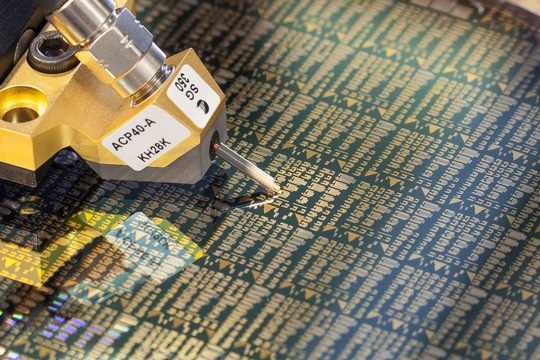German AlScN project hopes to halve 5G energy losses

Project using AlScN-based power semiconductors promises to cut energy losses during mmwave 5G transmission by 50 percent
Fraunhofer Institutes IAF and IIS along with the University of Freiburg and multiple industrial partners have begun a three year project to develop and test an energy-efficient edge-cloud system by 2025, making use of AlScN-based components and demand-driven control. The German Federal Ministry of Education and Research (BMBF) is funding the project known as 'EdgeLimit-Green ICT' as part of its wider Green ICT initiative.
EdgeLimit-Green ICT follows a successful preliminary project that evaluated innovative semiconductor technologies and application approaches. In the summer of 2021, the preliminary project succeeded in a BMBF innovation competition.
“Energy-efficient microelectronics, as we are developing in ‘EdgeLimit-Green ICT’, exemplifies how new technologies can become more powerful and at the same time conserve resources,” says Rüdiger Quay, project coordinator and executive director of the Fraunhofer Institute for Applied Solid State Physics IAF. The project consortium, which in addition to Fraunhofer IAF includes the Fraunhofer Institute for Integrated Circuits IIS, The Institute for Sustainable Systems Engineering (INATECH) at the University of Freiburg, and partners from industry, now aims to realise its solution for more energy-efficient mobile radio base stations by 2025.
Quay says: “The novel power semiconductor components being developed by Fraunhofer IAF, in combination with the intelligent, AI-assisted networking and control of the antenna system designed by Fraunhofer IIS, promise to halve energy losses during millimeter-wave 5G transmission.” The industrial partners in the project network are supporting the project through collaborations in the development of novel high-frequency transistors (Nokia), circuit processing (United Monolithic Semiconductors GmbH, UMS), and the real-world evaluation and transfer of test results (Deutsche Telekom AG).
Savings due to energy-efficient AlScN components and intelligent cloud-edge implementation
On the one hand, the high energy-saving potential of the antenna system that will be developed in EdgeLimit-Green ICT results from the superior material properties of the power semiconductor aluminum scandium nitride (AlScN). Researchers at Fraunhofer IAF produce AlScN employing MOCVD and use the material in building HEMTs. Due to its high current-carrying capacity, AlScN potentially allows significantly higher power density and gain compared to established semiconductors such as silicon, GaAs or GaN.
On the other hand, the savings result from an efficient design of the electronics. Thomas von der Grün, head of locating and communication systems department at Fraunhofer IIS, explains: “We are developing an innovative electronics architecture at Fraunhofer IIS to make possible intelligent networking and demand-driven control of the transmitter and receiver modules with the support of artificial intelligence (AI). This provides for a partial shift of processing capacities from the central infrastructure (cloud) to the edge of the network and the implementation of data processing systems.”
Overall, the combination of energy-efficient components and optimised organisation shall reduce the energy losses of the remote radio head (RRH) implemented in EdgeLimit-Green ICT by at least 50 percent. For this purpose, researchers double the power efficiency at the amplifier level at new frequencies between 26 and 34 GHz, halve the loss in power converters, and implement demand-driven system control.


































